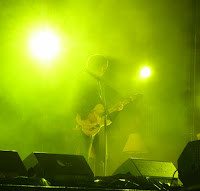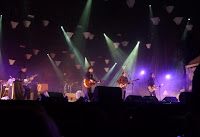1995
Awards: Hugo
Rating: ★ ★ ★ ★ ★
Neal Stephenson is one of my favorite sci-fi writers and I’m disappointed that with all the funny, rich, and prescient books he has written, I only get to write about one of them here.

I was introduced to Stephenson by a co-worker who suggested that I start with this book rather than the somewhat more famous Snow Crash. About ten pages in, I was hooked.
The opening chapter drops you bang into a new world on the outskirts of Shanghai fifty years or so in the future. You don’t understand any of the lingo or the technology or much of what is going on at first. But (as in Neuromancer, or A Clockwork Orange, or anything by Shakespeare) you learn quickly by immersion.
The society of The Diamond Age is technologically advanced but in many ways socially backward. Almost everybody belongs to a “phyle,” which is a sort of tribe or clan. Phyles are heavily class-segregated; the phyle you are in determines where you live, whether your neighborhood is polluted and crime-filled or not, how much education you receive as a child, and so on.
People who don’t belong to any phyle are called “thetes.” They live in a sort of demilitarized zone between phyle enclaves. They are outcasts who must survive by their wits and often by turning to lives of servitude or crime.
Some phyles have strength because of sheer numbers or sheer ruthlessness. Others have strength because they possess skills that others are willing to pay for. The richest and most powerful of these is the New Atlantis phyle, which is home to nearly all the “artifexes” (designers & programmers) of the nanotechnology that the world depends on. New Atlantis enclaves are on artificially extruded hills high above the poorer sea-level phyles, where the air is cleaner and their houses are easier to defend.
New Atlantans have adopted the lifestyle and mores of late-19th century Victorians – deeply repressed emotions; convoluted social etiquette; sweeping skirts and parasols for women; snuffboxes and waistcoats for men. But all of these affectations are supported by, and in some cases overtly combined with, the incredibly advanced nanotechnology that pervades everything.
Nanosites are responsible for purifying water and air and for performing most medicine. Neighborhoods are protected by grids of hovering nano-pods that can either be passive information-gatherers or defensive weapons. And the coolest thing (I thought at the time I read it) is that newspapers and books are no longer made of paper and print; they are now made of nano-paper, thin layers of nanosites sandwiched between mediatronic screens that can display a universe full of multimedia presentations at the request of the reader. (And to think it only took Apple 15 years after this book came out to come up with the iPad.)
To try to sum up the plot quickly (a tremendous injustice):
Lord Alexander Chung-Sik Finkel-McGraw, a powerful man in New Atlantis, sees that the crushing overprotectivity of his clan is causing their children to grow up without either creativity or common sense, and that this will eventually lead to their downfall. He hires a brilliant artifex, John Percival Hackworth, to build an intelligent, interactive book, a book he calls the Young Lady’s Illustrated Primer, for his granddaughter. The book will supplement and subvert the Victorian educational system; it is designed to teach a child to think creatively and to solve real problems, instead of the theoretical ones presented in schools.
Finkel-McGraw contracts with Hackworth to build one book, under top secret conditions, and makes him swear to destroy the compiled code so no one can ever build another one.
Hackworth builds the book but does not, however, destroy the code. He sneaks it out of his laboratory and takes it to a seedy neighborhood in Shanghai where he pays Dr. X, an off-network power broker with a matter compiler, to compile a second copy for his own daughter.
From here on in, of course, the gig is up. Not only does Dr. X immediately start trying to decrypt the compiler code so he can build his own copies of the book, but also, on his way back to New Atlantis, Hackworth is mugged by a gang of thete youths who rob him of everything he has, including the book. One of the thetes takes the book home and gives it as a present to his four-year-old sister, Nell.
Nell and her brother live in poverty, holed up in an apartment with a mother who entertains a steady stream of boyfriends, many of whom are abusive. They get most of their food from the free public matter compilers. Nell’s brother has steadily worsening asthma from the pollution in their neighborhood. Neither Nell nor her brother goes to school. But Nell immediately takes to the book, and the book, as it was programmed to do, bonds with her. It builds its lessons around her real life, including teaching her weaponry and self-defense. Eventually, following the arrival of a particularly violent boyfriend and with the help and advice of the book, Nell and her brother run away.
Tension builds as Nell spends the next few years evading capture by various people who want her book. Dr. X starts creating hundreds of thousands of copies of the Primer to give to orphans in China. Several phyles with terrorist bents, including one particularly scary one called the Fists of Righteous Harmony, grow stronger and begin to endanger the safety of the formerly protected ones. Eventually it starts to look like Nell, with her book-raised intelligence, pragmatism, and reluctant leadership skills, will be the one the world will depend on to take it in a new and better direction.
The style and content of The Diamond Age make you think right away of Neuromancer. While I liked Neuromancer okay, I never found myself laughing out loud while reading it like I do with Stephenson’s books. He’s got a sarcasm to him that is really funny.
Also, there’s something about the characters and the environment here that is more appealing to me. Some people have called Stephenson’s writing “post-cyberpunk,” to differentiate it from Gibson, the main idea being that in Gibson's original cyberpunk fiction the heroes are criminals bridling against a repressive dystopia, while the heroine in this one is definitely not a criminal and the world is not under any one omnipotent entity’s control.
The technology in The Diamond Age is just futuristic enough to be cool and amazing, but it is also described realistically enough that it seems like it could conceivably be developed by humans without aid of magic. It isn’t jarringly juvenile and is clearly thought up by somebody who knows about computers. It is also a great combination of old and new; for example, the New Atlantans want to ride around on horses like real Victorians, but they demand robotic horses that can take them at car-like speeds and do their own navigation.
Also, the Primer itself, as a storybook within a story, was brilliant. One of the best fairy tales Nell reads in her Primer takes place in the Dukedom of Turing, which is populated by robotic knights who throw her character into a dungeon. She has to figure out how to escape and then how to gain mastery over all of the robot knights, and along the way you (and she) see that the fable is teaching her the basics of computers and binary numbering systems and how to debug and reprogram code to do what you want it to do. It is awesome.

















